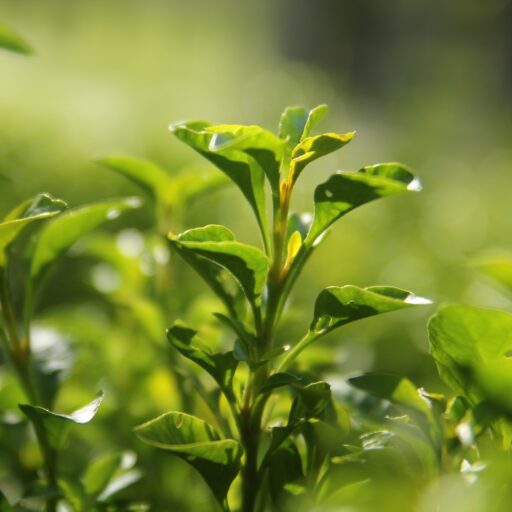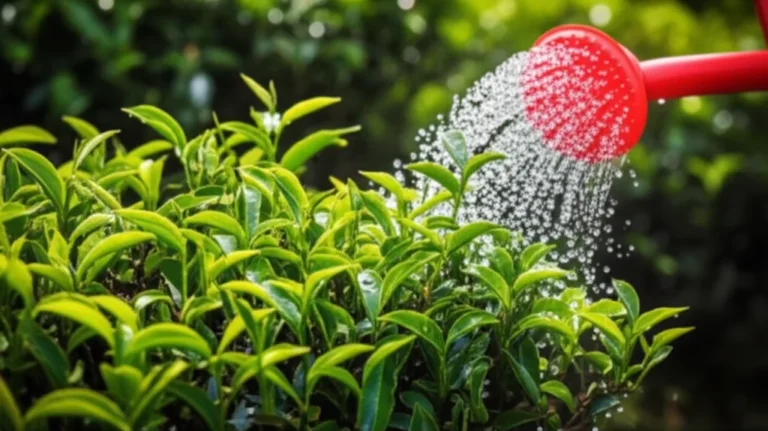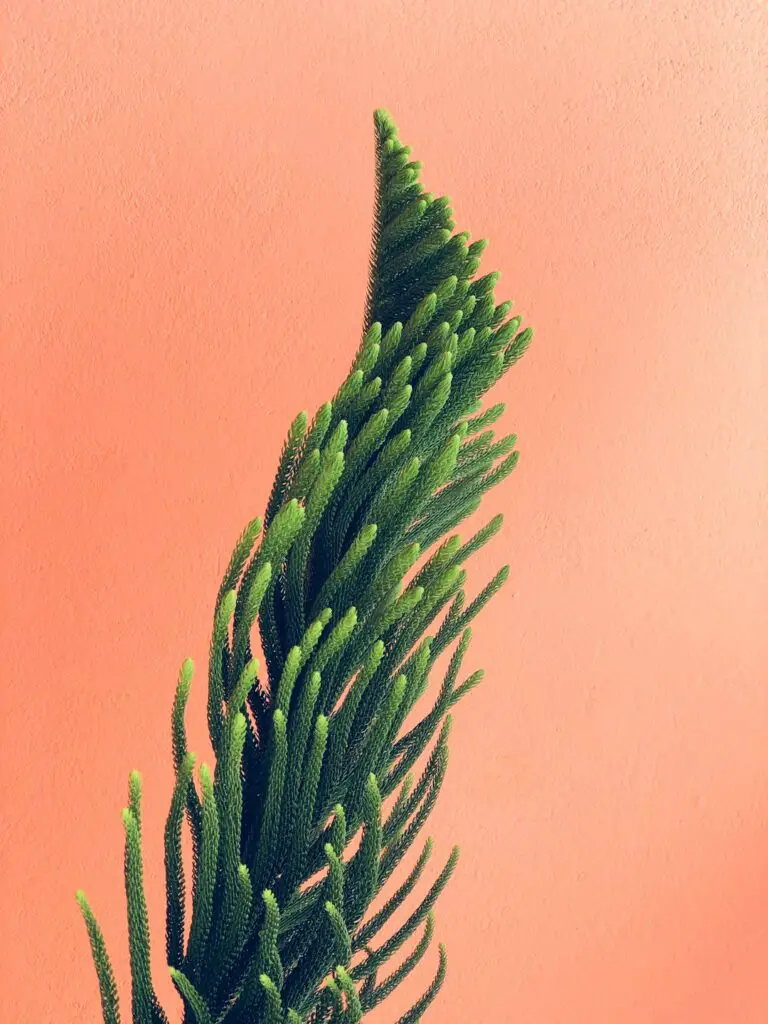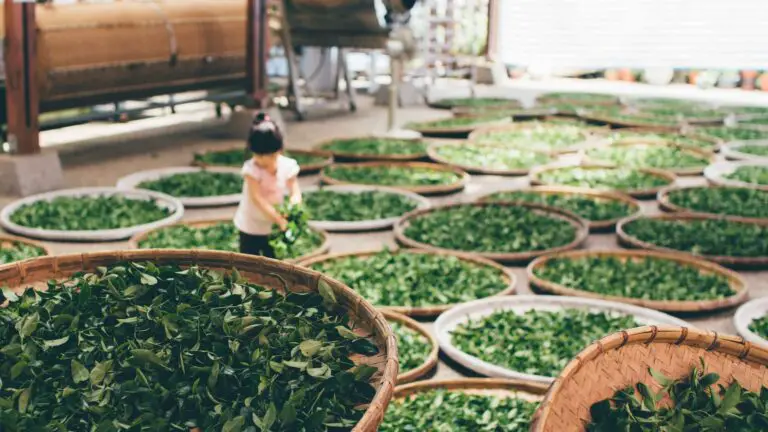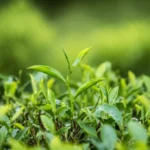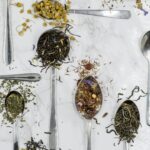Support our educational content for free when you purchase through links on our site. Learn more
Growing Tea from Seed: 12 Expert Tips to Cultivate Your Perfect Brew 🌱 (2025)
Have you ever wondered what it takes to grow your very own tea plant from seed? Imagine plucking fresh leaves from a bush you nurtured yourself, then brewing a cup of tea that carries the story of your green thumb and patience. Growing tea from seed is a fascinating journey—one that blends ancient tradition with modern gardening know-how. But beware: it’s not as simple as tossing seeds in the dirt! From selecting the right seed variety to mastering the art of pruning and processing, there’s a lot to learn before you can sip that first homemade cup.
In this comprehensive guide, the Growing Teas™ team shares 12 expert tips drawn from years of cultivating tea plants. We’ll walk you through everything from soil preparation and climate secrets to troubleshooting common challenges. Plus, we’ll reveal insider tricks on harvesting and processing your leaves at home—turning your garden into a personal tea estate. Curious about how long it takes for seeds to sprout, or what pests might threaten your crop? Stick around, because we’ve got those answers and more!
Key Takeaways
- Growing tea from seed requires patience and the right environment, including warm temperatures and acidic, well-draining soil.
- Selecting the correct tea seed variety is crucial for success and flavor quality.
- Proper watering, feeding, and pruning encourage healthy growth and maximize leaf yield.
- Processing your own tea leaves at home transforms fresh harvests into delicious brews.
- Sustainable and organic practices can enhance plant health and environmental impact.
Ready to embark on your tea-growing adventure? Let’s dive in and turn those tiny seeds into flourishing tea bushes!
Table of Contents
- ⚡️ Quick Tips and Facts for Growing Tea from Seed
- 🌱 The Fascinating Origins and History of Tea Cultivation from Seeds
- 🔍 Understanding Tea Seed Varieties: Which Ones Are Best for Your Garden?
- 🛠️ Preparing Your Soil and Environment for Successful Tea Seed Germination
- 🌞 The Ideal Climate and Location for Growing Tea Plants from Seed
- 1️⃣ Step-by-Step Guide to Planting Tea Seeds: From Seed to Seedling
- 2️⃣ Watering, Feeding, and Caring for Young Tea Seedlings
- 3️⃣ Common Challenges and How to Overcome Them When Growing Tea from Seed
- 🌿 Pruning and Training Your Tea Plants for Maximum Leaf Yield
- 🍵 Harvesting Your Homegrown Tea Leaves: When and How to Pick
- 🧪 Processing Tea Leaves at Home: From Fresh Leaves to Brewable Tea
- 🌍 Sustainable and Organic Practices for Growing Tea from Seed
- 💡 Expert Tips and Tricks from Growing Teas™ Team
- 🎯 Troubleshooting FAQs: Your Tea Growing Questions Answered
- 📚 Recommended Resources and Links for Aspiring Tea Growers
- 🔗 Reference Links and Scientific Studies on Tea Cultivation
- 🏁 Conclusion: Your Journey to Growing Tea from Seed Starts Here!
Quick Tips and Facts for Growing Tea from Seed
To get started with growing tea from seed, check out our related article about Growing Teas from Seed: 10 Essential Tips for Success! 🌱. Here are some quick tips and facts to consider:
- Tea seeds can be purchased online from reputable sellers or obtained from existing tea plants.
- Germination can take anywhere from a few weeks to several months, requiring patience and the right conditions.
- Soil should be well-draining and acidic, with a pH between 4.5-6.0.
- Climate plays a crucial role, with tea plants thriving in warm, humid environments with plenty of rainfall.
- Sunlight requirements vary, with young plants needing partial shade and mature plants tolerating full sun.
- Watering should be regular, ensuring the soil doesn’t dry out completely.
- Fertilizing with a balanced, acidic fertilizer can promote healthy growth.
- Pruning is essential for encouraging bushier growth and more leaf production.
For more information on tea cultivation, visit our categories on Green Tea Cultivation, Herbal Tea Planting, and Health Benefits of Tea.
The Fascinating Origins and History of Tea Cultivation from Seeds

Tea cultivation has a rich history, dating back thousands of years to ancient China. According to historical records, tea was first discovered in China over 2000 years ago. The practice of growing tea from seed has been passed down through generations, with various techniques and methods developed over time.
Understanding Tea Seed Varieties: Which Ones Are Best for Your Garden?
When it comes to choosing tea seed varieties, there are several factors to consider. Camellia sinensis sinensis and Camellia sinensis assamica are two popular varieties, each with its unique characteristics and requirements. For more information on tea seed varieties, check out our article on Tea Seed Varieties.
Preparing Your Soil and Environment for Successful Tea Seed Germination
To ensure successful germination, it’s essential to prepare your soil and environment accordingly. This includes:
- Soil testing: Check your soil pH and adjust it if necessary to ensure it’s within the ideal range for tea plants.
- Soil preparation: Add organic matter like compost or peat moss to improve soil structure and fertility.
- Greenhouse setup: Consider investing in a mini greenhouse to provide a warm and humid environment for your tea seeds.
The Ideal Climate and Location for Growing Tea Plants from Seed
Tea plants require a specific climate and location to thrive. Warm and humid environments with plenty of rainfall are ideal, with temperatures ranging from 60-85°F (15-29°C). For more information on climate and location, check out our article on Tea Plant Climate and Location.
Step-by-Step Guide to Planting Tea Seeds: From Seed to Seedling
Here’s a step-by-step guide to planting tea seeds:
- Soak seeds: Soak your tea seeds in water for 24-48 hours to aid germination.
- Sow seeds: Sow your soaked seeds about 1/4 inch deep in a well-draining seed-starting mix.
- Provide warmth and humidity: Keep your soil consistently moist and provide warmth and humidity using a humidifier or mini greenhouse.
- Transplant: Once your seedlings have developed a few sets of true leaves, transplant them into larger pots or directly into the ground.
Watering, Feeding, and Caring for Young Tea Seedlings
Young tea seedlings require regular watering, feeding, and care to ensure healthy growth. This includes:
- Watering: Water your seedlings regularly, ensuring the soil doesn’t dry out completely.
- Fertilizing: Use a balanced, acidic fertilizer to promote healthy growth.
- Pruning: Prune your seedlings regularly to encourage bushier growth and more leaf production.
Common Challenges and How to Overcome Them When Growing Tea from Seed
Growing tea from seed can be challenging, with common issues including:
- Pests and diseases: Regularly inspect your plants for signs of pests or diseases, and take action promptly if necessary.
- Environmental factors: Ensure your plants are protected from extreme temperatures, wind, and other environmental factors.
Pruning and Training Your Tea Plants for Maximum Leaf Yield
Pruning and training your tea plants is essential for maximizing leaf yield. This includes:
- Regular pruning: Prune your plants regularly to encourage bushier growth and more leaf production.
- Training: Train your plants to grow in a desired shape or form, using techniques such as topiary or espalier.
Harvesting Your Homegrown Tea Leaves: When and How to Pick
Harvesting your homegrown tea leaves requires careful consideration of when and how to pick. This includes:
- Timing: Harvest your tea leaves at the right time, typically when they are young and tender.
- Method: Use the right method for harvesting, such as hand-picking or mechanical harvesting.
Processing Tea Leaves at Home: From Fresh Leaves to Brewable Tea
Processing your tea leaves at home requires several steps, including:
- Withering: Allow your tea leaves to wither, either by air-drying or using a food dehydrator.
- Rolling: Roll your tea leaves to release their natural enzymes and start the oxidation process.
- Oxidation: Allow your tea leaves to oxidize, either by air-drying or using a tea oxidizer.
- Firing: Fire your tea leaves to stop the oxidation process and dry them out completely.
Sustainable and Organic Practices for Growing Tea from Seed
Growing tea from seed can be done using sustainable and organic practices, including:
- Organic fertilizers: Use organic fertilizers, such as compost tea, to promote healthy growth.
- Integrated pest management: Use integrated pest management techniques, such as crop rotation, to minimize the use of chemical pesticides.
Expert Tips and Tricks from Growing Teas Team
Our team at Growing Teas has several expert tips and tricks to share, including:
- Start small: Start with a small number of tea seeds and gradually increase your crop as you gain experience.
- Be patient: Growing tea from seed requires patience, so be prepared to wait several months for your seeds to germinate and grow.
- Monitor your plants: Regularly monitor your plants for signs of pests, diseases, or environmental stress.
Troubleshooting FAQs: Your Tea Growing Questions Answered

We’ve compiled a list of frequently asked questions and answers to help troubleshoot common issues when growing tea from seed. Check out our FAQ page for more information.
Recommended Resources and Links for Aspiring Tea Growers
For more information on growing tea from seed, we recommend checking out the following resources:
- The Tea Association: A comprehensive resource for tea growers, including information on tea seed varieties, soil preparation, and pest management.
- The Camellia Forest Tea Gardens: A website dedicated to tea cultivation, including articles, videos, and resources for tea growers.
- The Renegade Tea Company: A tea company that offers tea seeds, tea plants, and tea-related products, as well as resources and advice for tea growers.
Reference Links and Scientific Studies on Tea Cultivation
For more information on tea cultivation, we recommend checking out the following scientific studies and reference links:
- The Journal of Tea Science: A peer-reviewed journal that publishes articles on tea science, including tea cultivation, processing, and chemistry.
- The Tea Research Association: A research organization that conducts studies on tea cultivation, including tea seed varieties, soil preparation, and pest management.
- The USDA: A government website that provides information on tea cultivation, including articles, videos, and resources for tea growers.
Conclusion: Your Journey to Growing Tea from Seed Starts Here!

Growing tea from seed is truly a rewarding adventure that combines patience, care, and a bit of botanical magic. From soaking those tiny seeds to nurturing delicate seedlings and finally harvesting your own fresh tea leaves, the journey is as enriching as the cup of tea you’ll brew at the end.
What we’ve learned:
✅ Tea seeds require warm, humid, and well-draining acidic soil to thrive.
✅ Germination times vary widely—anywhere from a few weeks to several months—so patience is your best friend.
✅ Young tea plants need careful watering, feeding with acidic fertilizers, and protection from harsh environmental conditions.
✅ Pruning and training your plants encourages bushier growth and better leaf yield.
✅ Processing your own tea leaves at home is a fascinating craft that lets you tailor flavors to your liking.
While growing tea from seed isn’t a quick fix (it’s a long game, as Renegade Tea Estate wisely puts it), the satisfaction of cultivating your own tea plants and eventually brewing your own cup is unmatched. Whether you’re a gardening newbie or a seasoned green thumb, the tips and insights from our Growing Teas™ team will help you succeed.
So, ready to roll up your sleeves and start your tea-growing journey? Remember, every great tea story begins with a single seed! 🌱🍵
Recommended Links
Ready to get your hands dirty? Here are some of the best products and resources to kickstart your tea-growing adventure:
-
Mini Greenhouse for Seed Germination:
-
Humidifier to Maintain Moisture:
-
Levington Peat-Free Ericaceous Compost (Great for Acidic Soil):
-
Miracle-Gro Azalea, Camellia & Rhododendron Soluble Plant Food:
-
Books on Tea Cultivation and Processing:
FAQ

How long does it take for tea plants to grow from seed?
Tea seeds typically take 6 to 8 weeks to germinate under ideal conditions, but it can sometimes take up to several months depending on seed freshness, temperature, and moisture. After germination, it usually takes 3 to 5 years for tea plants to mature enough for a meaningful harvest. This slow growth pace is why patience is key in tea cultivation.
Read more about “How to Grow Green Tea at Home: 12 Expert Tips for Success (2025) 🍃”
What are the best conditions for germinating tea seeds?
Tea seeds germinate best in warm (around 20-25°C / 68-77°F), humid, and shaded environments. Soaking seeds for 24-48 hours before planting helps soften the seed coat and jumpstart germination. Use a well-draining, acidic soil mix (pH 4.5-6.0), and keep the soil consistently moist but not waterlogged. A mini greenhouse or humidity dome can help maintain moisture and warmth. Avoid direct sunlight during germination to prevent drying out.
Read more about “How Do I Propagate Tea Plants? 🌱 7 Expert Methods Revealed (2025)”
Can you grow tea plants indoors from seeds?
✅ Yes! Growing tea indoors is possible, especially in cooler climates where outdoor conditions aren’t ideal. Use pots with good drainage, place them in a bright, indirect sunlight location, and maintain humidity with a humidifier or humidity tray. Keep temperatures stable and avoid drafts. Indoor growing allows you to control environment variables but requires attention to watering and light levels.
Read more about “Is It Difficult to Grow Your Own Tea? 12 Expert Tips for Success (2025) 🍃”
How do you care for young tea seedlings after germination?
After germination, tea seedlings need:
- Gradual acclimation to light: Start with indirect sunlight, then slowly introduce more direct light.
- Consistent watering: Keep soil moist but avoid overwatering to prevent root rot.
- Feeding: Use a diluted, balanced, acidic fertilizer once seedlings develop a few true leaves.
- Protection: Shield seedlings from extreme temperatures, drafts, and pests.
- Transplanting: When roots are established (about 3-4 inches tall), move seedlings to larger pots with ericaceous compost.
Read more about “Growing Teas Indoors: 10 Secrets for a Thriving Garden! 🌱”
What common pests and diseases affect tea plants, and how can I prevent them?
Tea plants can be vulnerable to pests like aphids, spider mites, and scale insects, and diseases such as root rot and leaf spot. Prevention includes:
- Regularly inspecting plants for early signs of infestation.
- Maintaining good air circulation and avoiding overwatering.
- Using organic pest control methods like neem oil or insecticidal soap.
- Practicing crop hygiene by removing dead leaves and debris.
How often should I prune my tea plants?
Pruning is best done once or twice a year, typically in early spring and late summer, to encourage bushier growth and improve leaf quality. Remove dead or weak branches and trim the tops to maintain a manageable size. Regular pruning helps stimulate new shoots, which produce the best tea leaves.
Read more about “What Climate Conditions Are Needed to Grow Tea Successfully? 🌱 (2025)”
Reference Links and Further Reading
- Growing tea plants at home – Renegade Tea Estate — A detailed personal account of tea cultivation from seed.
- Tea Association of the USA — Industry insights and cultivation resources.
- Britannica: Tea — Historical and botanical background.
- USDA Plant Database — Scientific data on Camellia sinensis.
- The Tea Research Association — Research on tea cultivation and processing.
- Amazon: Tea Growing Books — Comprehensive guides for tea enthusiasts.
We hope this comprehensive guide has brewed up your excitement to grow your own tea from seed! Remember, every leaf you nurture is a step closer to sipping your very own homegrown brew. Happy planting! 🍃🍵
